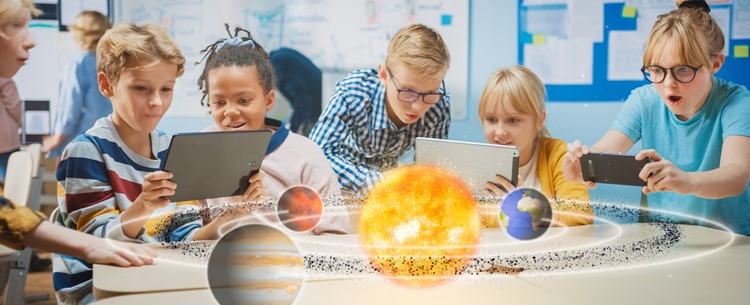By Michael Hilkemeijer
Digital technology in preschool should never replace traditional practices of play in early childhood education. They should always be well-integrated into curriculum in a balanced manner. A good example of this occurring is by incorporating technology that promotes physical play as it is an important and effective way for young children to learn.
Virtual and augmented reality provides much of the benefits of technology in early childhood education as much of the recent literature has indicated. It is defined as a live direct or indirect view of a physical, real-world environment where the elements are augmented (or supplemented).
Digital technology use in early childhood education such as this has been surveyed amongst parents and the results have indicated that they are supportive of its use as they see it as an enriching and valuable addition to the early childhood curriculum.
As the use of digital technology in early childhood education is specifically addressed in the EYLF AR/VR can be increasingly embedded into the early childhood curriculum as it allows individuals to interact with these real or virtual objects.
Benefits of VR/AR
What are the key benefits of this technology in early childhood classrooms then? In a study on the literature about augment reality (Manipour & Cohrssen, 2020), the benefits were found to be that of the following.
Fun Learning
The attention span of young children is generally short and while young children today are exposed digital technologies prior to joining your early childhood learning environment, you may find it easier to catch their attention using VR/AR as it allows for moving images/objects. This almost results in immediate engagement which means fewer distractions. You can also change the visual settings of the game to cater to each child’s visual engagement.
Enhance Motivation
If children are engaged in the game, it will motivate them to want to play. Studies have indicated that most VR/AR require full participation meaning if the child doesn’t move then the avatar won’t move itself. Concept acquisition is also supported by the use of AR objects. Children learn best when they figure out concepts at their own level and through VR/AR this is achieved as children are able to explore AR objects from different perspectives.
Improved child learning outcomes
Studies have also suggested that children’s learning outcomes is improved by AR during dramatic play, shared book reading, art activities and alphabet learning.
Develop positive attitudes and behaviour and enhance social skills
Other studies (Lorusso et al., 2018) have also concluded that AR supports high levels of social interaction and participation. This may be because the nature of AR and/VR is to encourage children to work together, building their cooperation skills while also improving their communication skills. Technology use in early childhood education gives your child a sense of control over their learning.
Enhances teaching and learning
The benefits of technology use in early childhood education also extends to the many ways that it can assist you in your teaching and learning environments as an early childhood practitioner. As mentioned earlier, technology should never replace traditional methods but it can be used alongside them in order to enhance young children’s learning capabilities.
In the 21st century, digital technology in early childhood education is an important element for young children to learn. Traditional early childhood pedagogies need to adapt to these new ways of teaching so that children’s learning experiences will become enriched with new learning possibilities and their quality is significantly improved.
